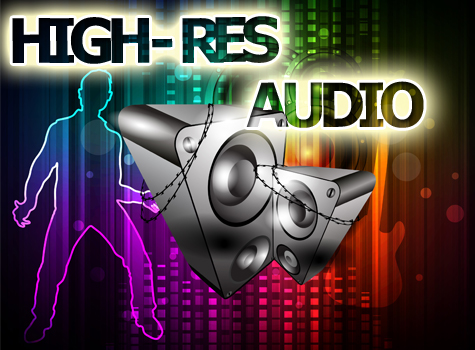Behind the Buzz: What Is High-Resolution Audio?

From records and reel-to-reel tapes to cassettes to eight-track tapes to CD’s to SACD and DVD-audio, the next generation of music delivery is digital. The standard for High Resolution Audio, the best quality digital sound available, has finally been set.
After a long period of debate and discussion a definition and standards for High Resolution Audio (HRA) have now been agreed upon. The official definition for HRA is “lossless audio that is capable of reproducing the full range of sound from recordings that have been mastered from better than CD quality music Sources.”
One of the issues for promoting HRA is the lack of knowledge regarding the difference between high-resolution audio and CD-quality (or even lower quality, MP3) content. For the generation weaned on iPad’s and iPhone’s as their music source, it is easy to tell the difference between MP3 quality and HRA quality sound. Identifying true HRA on a download site and feeling confident enough in its authenticity to be willing to pay twice the price of an MP3 download or CD that can be ripped is the problem.
CD-quality audio has a bit depth of 16 and a sampling rate of 44.1kHz. According to the Consumer Electronics Association, HRA is any recording that is better than the CD’s 44.1 kHz sampling rate. While this usually means 24 bit instead of 16 bit depth and at least a 96kHz sampling rate, as long as the bit depth and/or the sampling rate is from a source with a greater depth and sampling rate than a CD, it is HRA. You need not be an audiophile or a recording professional to know what all of this means. When you listen to HRA audio you should be hearing exactly what the professionals in the recording studio heard when they mixed what the artist performed. You should feel like you are right there in the recording studio with the artist..
HRA downloads will cost more just like SACD’s which hold 24 bit depth cost more than CD’s. HRA downloads will also take more storage space on your hard drive. Low-resolution audio became a necessity when listeners wanted to store hundreds of songs on their first generation iPod in an era when hard drive space was expensive. However, the Lossy file format used by HRA downloads will cost more just like SACD’s which hold 24 bit depth cost more than CD’s. HRA downloads will also take more storage space on your hard drive. Low-resolution audio became a necessity when listeners wanted to store hundreds of songs on their first generation iPod in an era when hard drive space was expensive. However, the Lossy file format used by iTunes and other MP3 devices degrades the quality of the music from its source. iTunes and other MP3 devices degrades the quality of the music from its source.
HRA-capable file formats are either uncompressed, like AIFF or WAV; or lossless, like ALAC or FLAC. Uncompressed formats make no attempt to economize on bits. Whatever is there remains unchanged for storage and playback. Lossless formats temporarily compress data for storage but automatically expand it during playback. Whatever was there when the recording was made is there when you hear it but it compresses itself when you store it.
While the compressed HRA formats take less hard drive space, an ALAC or FLAC file will still take about 8 times more space than an MP3 lossy file format will take. However, since HRA compressed formats do not permanently chop off any of the 1’s and 0’s, the ALAC or FLAC format sounds more detailed and has greater depth than any lossy format. Unfortunately, right now, Apple iPhones, iPads and iPods do not support AIFF, WAV, ALAC or FLAC. Stay tuned for more on this subject coming soon.
